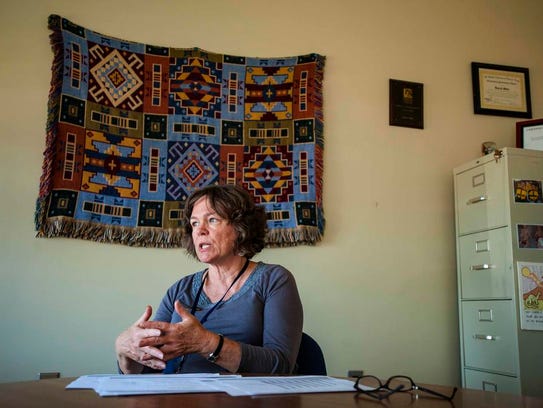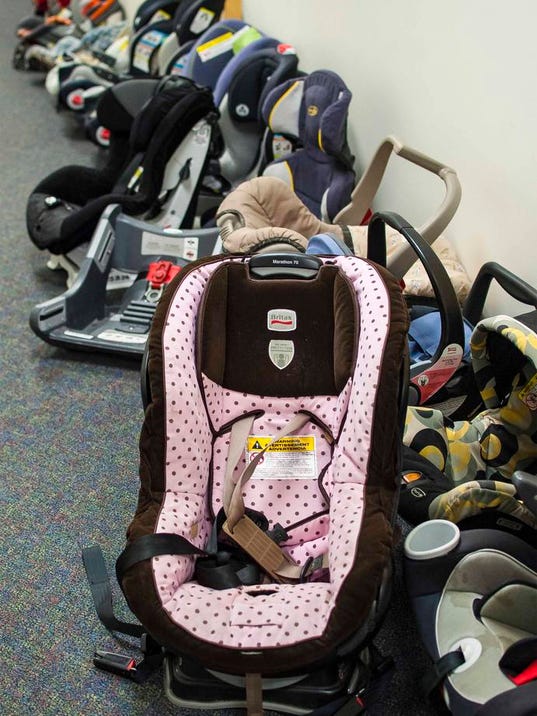Strict Standards: Only variables should be assigned by reference in /home/noahjames7/public_html/modules/mod_flexi_customcode/tmpl/default.php on line 24
Strict Standards: Non-static method modFlexiCustomCode::parsePHPviaFile() should not be called statically in /home/noahjames7/public_html/modules/mod_flexi_customcode/tmpl/default.php on line 54
Strict Standards: Only variables should be assigned by reference in /home/noahjames7/public_html/components/com_grid/GridBuilder.php on line 29
ESSEX JUNCTION, Vt. — Vermont’s child protection system is stocking up on car seats.
That’s because, as the state has grown more strict about heroin and parenting during the past 18 months, the number of young children in state custody has spiked by 75%.
The shift is unprecedented. This summer — for the first time — newborns, toddlers and preschoolers surpassed 12- to 17-year-olds as the largest group in state care.
“If you had asked me two years ago, ‘What’s your greatest need for foster families?’ I would have said, ‘Families that can take teens, and families that can take sibling groups,’” said Cindy Walcott, deputy commissioner for the family services division at the Department for Children and Families.
“That has changed. Now I would say to you, ‘Families that can take infants.’”
Tragedies and retooling
Walcott attributes the removal of young children to several factors.
Records show the state Department for Children and Families took custody of more young children starting around March 2014 — one month after a toddler died of head injuries in Rutland County, prompting Vermont’s child protection leaders to reconsider policies that previously had favored keeping families together.
The deaths of 2-year-old Dezirae Sheldon of Poultney and, later, 15-month-old Peighton Geraw of Winooski made state social workers more cautious, Walcott said.

Cynthia Walcott, deputy commissioner for the Vermont Department of Children and Families, discusses the increase in the number of very young children that DCF has removed from their families at her offices in Essex Junction on Sept. 15, 2015. (Photo: Glenn Russell, Burlington (Vt.) Free Press)
“It’s just human nature,” Walcott said in an interview Tuesday at her office in Essex Junction. Investigations, public hearings and a major child-protection bill at the state Legislature added to scrutiny of the department.
Separately from the child deaths, the Department for Children and Families also conducted an internal survey in June 2014 and found that opiates were a factor in 80% of cases involving children under age 3 who had been removed from their homes.
The department also consulted with national experts about the effect of heroin on young children.
“As we saw what was changing in our environment — and that was the increase in heroin use — we realized that we had to retool and to really increase our expertise,” Walcott said. “We realized that we had not really fully appreciated the impact on child safety.”
The realization led to a new equation at DCF: Untreated heroin addiction plus young children equals danger.
“What we know about the impact of heroin is that those parents are highly unlikely to be able to prioritize the needs of the child over their need for the drug,” Walcott said.
Opiates and new mothers
Seeking healthy babies, many women become more open to opiate addiction treatment when they become pregnant, said Sally Borden, executive director of KidSafe Collaborative in Burlington.
Pregnant women jump to the top of the waiting list for medication-assisted treatment.
The Vermont Health Department says that in 2013, for every 1,000 deliveries, 45.8 infants had been exposed to opioids. The rate has doubled since 2009.
“The increase may be partially explained by the increase in provider awareness and the increased access to treatment,” state health analyst Shayla Livingston noted in a report published this summer.
Most opiate-addicted mothers can succeed as parents if they commit to treatment and recovery, said Anne Johnston, a pediatrician and neonatologist at the University of Vermont Medical Center.
“I want to say that the majority of (addicts) can parent very effectively. Addiction is a disease like any other disease, and it needs to be treated that way. So the majority can parent just as anybody else.”
Anne Johnston, a pediatrician and neonatologist at the University of Vermont Medical Center“I want to say that the majority of them can parent very effectively,” Johnston said. “Addiction is a disease like any other disease, and it needs to be treated that way. So the majority can parent just as anybody else.”
But Johnston, who leads the hospital’s NeoMed clinic, also worries that the growing number of young children in DCF care might discourage women from seeking treatment, for fear of losing custody.
“What I am concerned about is that we’ll have more women that are untreated during pregnancy,” Johnston said, and that “there will be increased prematurity, increased low birth rate, and that they’ll fly under the radar, and their babies will fly under the radar.”
Walcott, the Department for Children and Families official, acknowledges the fear.
“If a parent is actively, positively engaged in treatment, they stand an excellent chance of keeping their babies,” Walcott said. “It’s those women who do not seek treatment that are at risk.”
One way to combat the fear, Johnston said, is to build women’s trust in hospital treatment programs.
“We have created this inviting program, and the word is that you will be treated well and with respect from the other moms who’ve gone through it,” Johnston said.
Fighting stereotypes
Trine Bech, who supports parents through the Vermont Parent Representation Center, and Sandi Yandow, of the kinship support organization K.I.N.-K.A.N. Vermont, are concerned about the increase of young children in state custody.
They are pushing for a change in Vermont’s attitude toward child welfare.
“‘Parent’ has suddenly become synonymous with something bad,” Yandow said in a recent interview.
Bech acknowledges some children need to be removed from homes to be kept safe, but she argues Vermont relies too heavily on that solution for risk of harm.
“Right now families feel completely cornered,” Bech said. “They’re afraid of everybody, because nobody is coming forth as a group to be helpful.”
The Vermont Parent Representation Center says communities still view opiate-addicted parents through “old stereotypes,” even when parents are in treatment.
“We look at them as if every day, in front of their children, they are doing terrible things, and that is so, so not the case in the majority of these situations,” Yandow said. “It almost feels in the recovery community for women that are pregnant and parenting, that it feels sometimes like a roundup.”
Parenting classes and other supports are available through non-profit organizations — such as Prevent Child Abuse Vermont, which runs a program for families in recovery from substance abuse.
“We have seen demand for that program rise significantly and really far outstretch our capacity to fully respond,” said Linda Johnson, executive director of Prevent Child Abuse Vermont.
A call for foster families
Advocates for children interviewed for this article stressed several pressing needs in Vermont.
Caseloads for Vermont social workers remain too high and are getting higher, despite 18 social workers hired last year following the two child deaths.
Vermont’s new child-protection law also instructs the Department for Children and Families to keep cases open for six months after children have been reunified with their families — adding to the work.
“The caseload numbers now are back to where they were, or in some districts even higher than they were before that,” said Borden of KidSafe Collaborative. “So we’re not keeping up with the need for DCF staff to have the time to handle this increase in caseload, and that’s really, really concerning to me.”
Johnson of Prevent Child Abuse Vermont added: “It is well overdue for the administration and the Legislature to really take responsibility for increasing the number of workers so that the ratio between cases and social workers is proper and meets federal standards.”
But today, the Department for Children and Families is searching for foster families for all of the newborn and infant children who have been removed from Vermont households.
Few families are able to care for a newborn on short notice, Walcott said.
“It’s a shortage of families who can take very young children,” she said. “So far, we have found them, but I am really concerned about that for the future.”
Read or Share this story: http://usat.ly/1UTZKw9
Strict Standards: Only variables should be assigned by reference in /home/noahjames7/public_html/modules/mod_flexi_customcode/tmpl/default.php on line 24
Strict Standards: Non-static method modFlexiCustomCode::parsePHPviaFile() should not be called statically in /home/noahjames7/public_html/modules/mod_flexi_customcode/tmpl/default.php on line 54
Find out more by searching for it!

